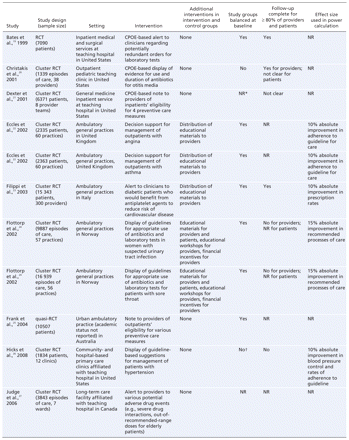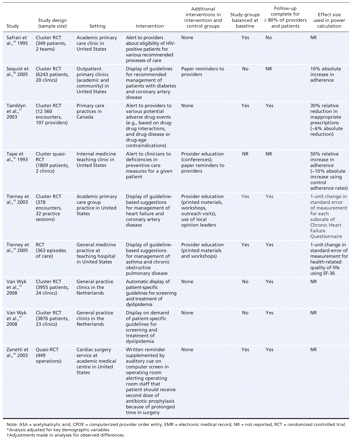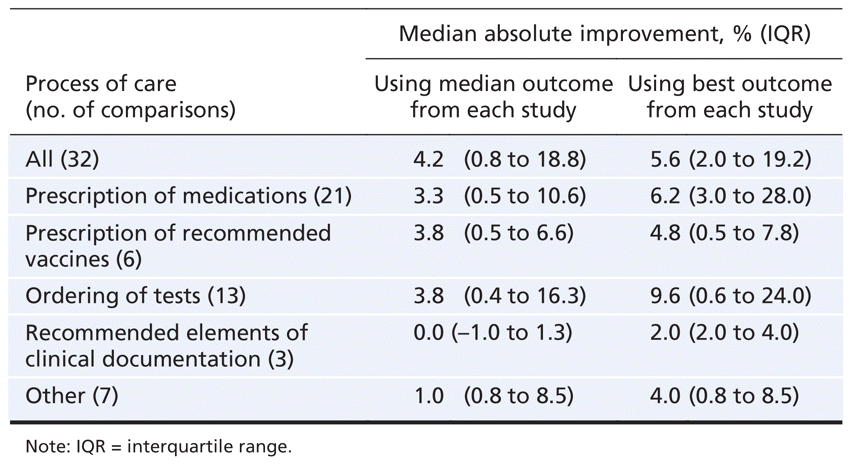Article Figures & Tables
Figures
Figure 1: Results of literature search. *Excluded topics included expert systems (e.g., artificial intelligence or neural network applications) for facilitating diagnosis or for estimating prognosis; decision support not directly related to patient care (e.g., coding medical records); and reminders directed primarily at nonphysicians.
Figure 2: Median absolute improvements in adherence to processes of care between intervention and control groups in each study. Each study is represented by the median and interquartile range for its reported outcomes; studies with single data points reported only one eligible outcome.
Figure 3: Median effects for adherence to processes of care by study feature. *Kruskall–Wallis test; all other p values reflect Mann–Whitney test. †Quasi-RCT refers to randomized controlled trials in which intervention status was assigned on the basis of an arbitrary but not truly random process, such as even or odd patient (or provider) identification numbers. ‡The total number of comparisons for the analysis of sample size is 31 because one study did not report the number of patients. §Studies classified as having no cointervention were those in which a computer reminder alone was compared with usual care; studies classified as having co-interventions were those in which the intervention group received a computer reminder plus one or more other quality improvement interventions, while the control group received those same quality improvement interventions but no computer reminder.

















